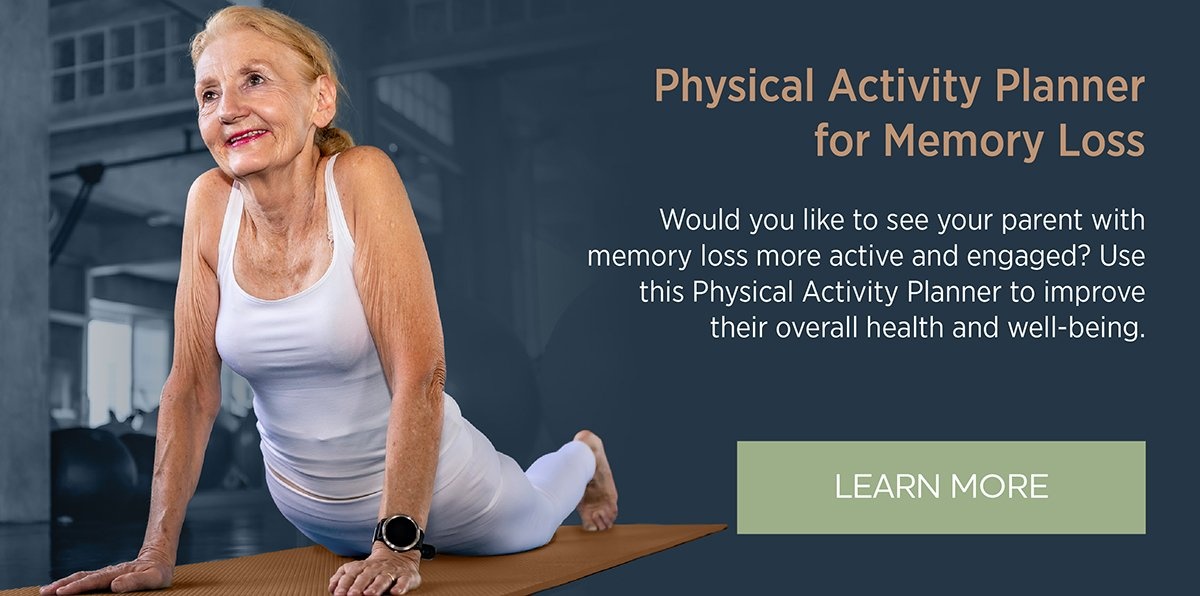 Are you worried about your mom who spends the majority of her days in her favorite chair? Does your dad have difficulty getting out of bed in the morning and now has started wandering at night?
Are you worried about your mom who spends the majority of her days in her favorite chair? Does your dad have difficulty getting out of bed in the morning and now has started wandering at night?
How Dementia Affects Engagement in Exercise
If you’re caring for a loved one who has been diagnosed with a form of dementia, you might be prepared for them to lose their memory. However, did you know the changes in their brain, caused by dementia, will also make physical activity increasingly difficult?
Dementia is a progressive disease. In the early stages of dementia, your loved one may still be able to live and function independently. Maybe they’re forgetting more than they used to or telling the same stories over and over. As the disease gets worse, balance, coordination, and even motivation decline, which makes it difficult to participate in physical activities.
Each person’s experience will be different. Some of the changes your loved one might experience include:
- Loss of balance or coordination
- Stiff muscles
- Shuffling or dragging feet when walking
- Trouble standing or sitting up in a chair
- Weak muscles and fatigue
- Depression or general lack of interest
Although your loved one will experience a decline in physical abilities, renowned dementia expert Teepa Snow says it’s up to caregivers to focus not on what’s lost but on what’s left and to concentrate on what can be done rather than what can’t.
Signs Your Loved One Needs Help Staying Active
Physical activity is about way more than just the body. Thanks to the mind-body connection, physical activity can reduce the risk of or can improve many diseases, including delaying the progression of dementia in older adults. For people with memory loss especially, staying active can also boost their mood and alertness, enhance their sense of purpose and well-being, and help prevent frustration, boredom, and unexpected behaviors.
So, what are some signs that your loved one needs help staying stimulated and engaged? Without physical activity, you might find that your loved one:
- Wanders
- Starts to withdraw from the outside world
- Displays signs of agitation or boredom
- Has a hard time falling asleep at night (known as sundowning)
How to Increase Physical Activity
If you’re concerned that you have to become a personal trainer in addition to a caregiver on top of all of your other roles, don’t worry. For people with memory loss, physical activity doesn’t have to be regimented exercise.
For people in the early to middle stages of dementia, it might include stretching, dancing, gardening, walking, or any other variety of activities they might enjoy. For those in the later stages of dementia, staying mobile can be as simple as changing chairs when having a drink or a meal.
Here are a few tips to get started:
- Use simple, easy-to-follow directions.
- Create a repetitive sequence.
- Create visual cards of the activity to prompt your loved one.
- Be aware that loud music and bright lights can be overwhelming for those with sensory issues.
- Avoid long sessions of physical activity. Instead, break up the day with two or three 15-minute sessions of activity.
Most often what prevents families from implementing an activity program at home is lack of guidance about what exercises are appropriate for their loved one or fear that physical activity will result in an injury or cause pain. Living with dementia doesn’t — and shouldn’t — have to mean an end to all activities.
To learn how to safely increase physical activity for people with memory loss, types of physical activities and creative ways to incorporate them into your daily routine, and what to consider when making a plan, download our Physical Activity Planner for Memory Loss. It includes a planner, where you can brainstorm activities you can do with your loved one to keep them moving, as well as Daily Activity Journal to keep track of your loved one’s physical activity and their responses to the various activities you planned throughout the day.





